Our Vintage Orrery
• CCNY Planetarium
The Orrery
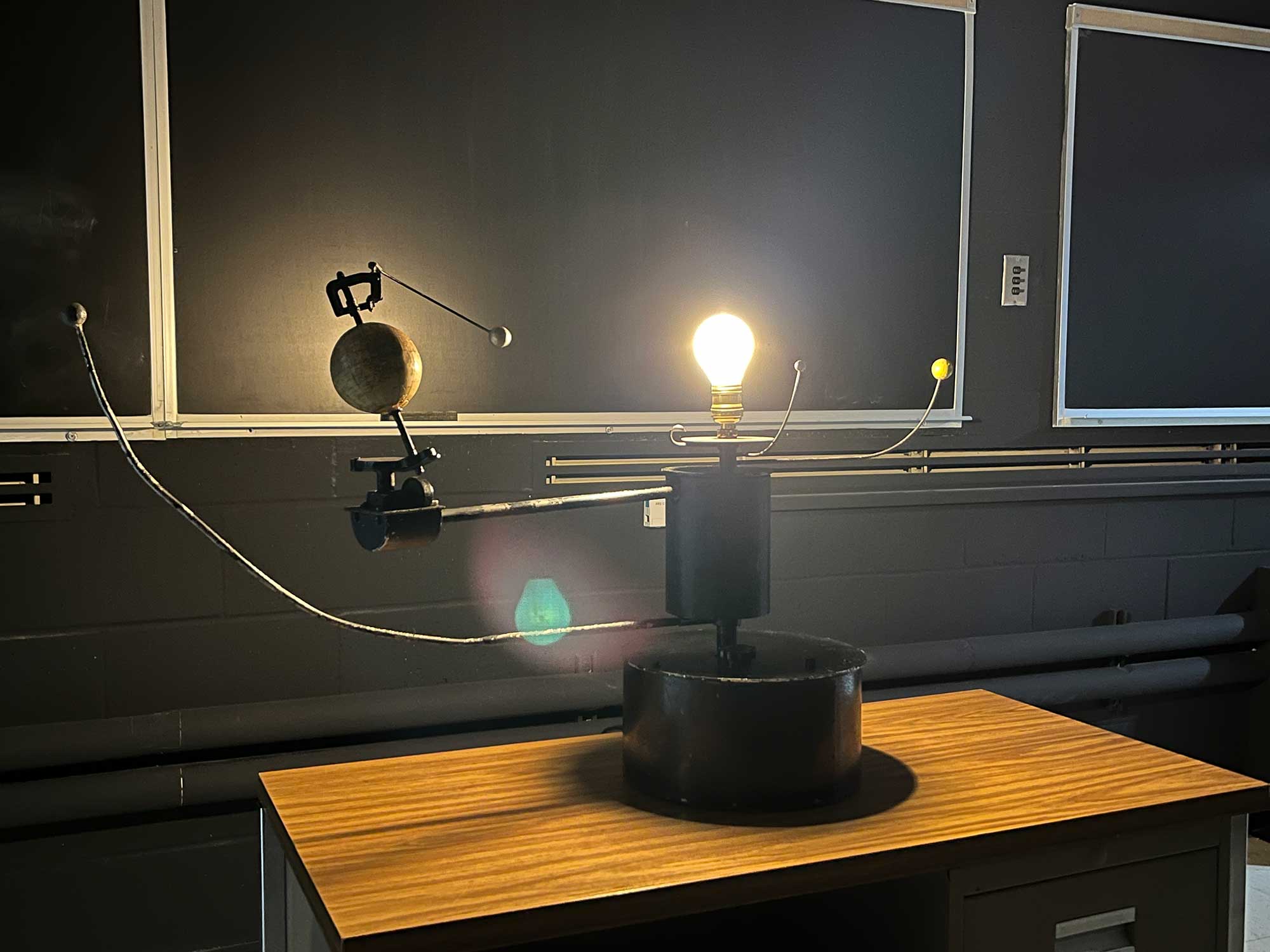
Several years ago, we started work on refurbishing an antique orrery that had been in storage for who knows how many decades.
An orrery is a mechanical model of the solar system. Using special gearing and careful design, these beautiful objects would attempt to capture the complex motions of the celestial bodies on a table top scale recreation. This exact version, made by Eastern Science Supply Company probably about 100 years ago, features a earth-moon system, and three other planets (2 inner & 1 outer) along with a central sun illuminating all the spheres.
Deconstruction
Like any kid who grew up with analog electronics, the first step in any repair is to just take it apart!
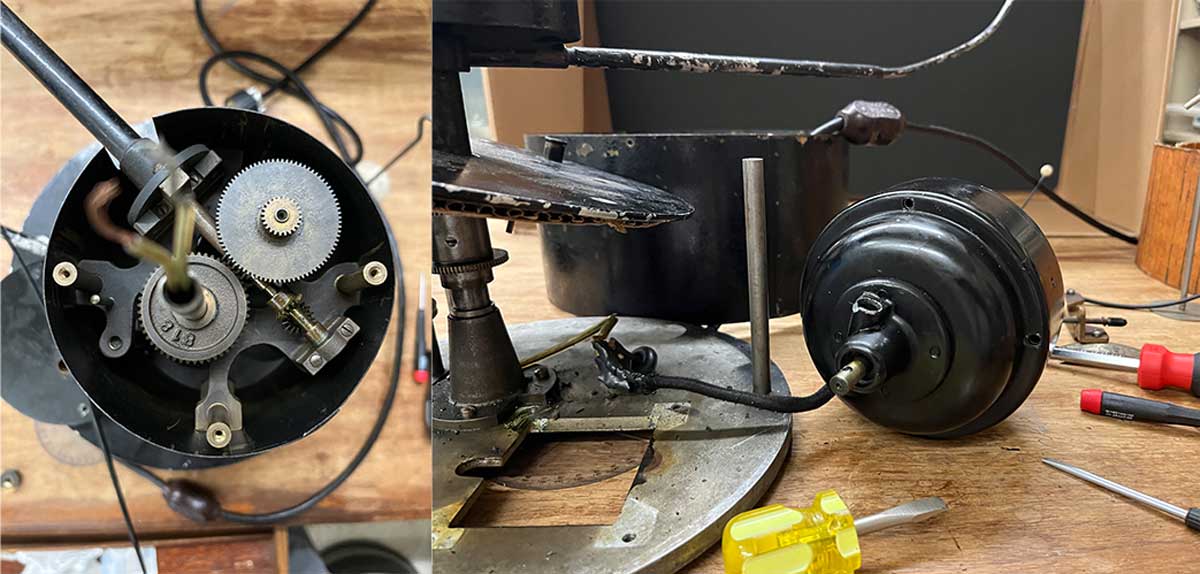
There seemed to be something not quite right with the motor, and there was a lot of squeaking going on with the gears. Not to mention the fact that there were no instructions or diagrams to be used as reference for what was supposed to happen.
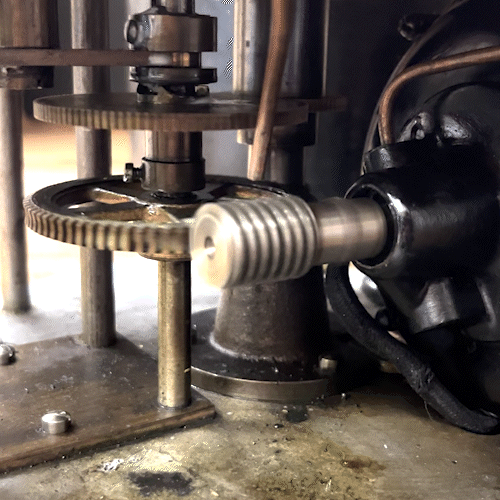
After some time spent just looking at everything and trying to understand the basic mechanisms, we got the motor re-installed, and cleaned up the gears. It's alive! There was a knob on the main panel that shifted the position of some of the gears below the top plate. But what did it do? Now we know. It's a speed control. There is a fast and slow speed for the motion of the solar system. And it will also disengage the entire rotation system so the planets and moon are just still, while the light stays on in the center.
Inspection of all the gears and various assemblages didn't reveal any major problems, so we proceeded to keep cleaning the mechanisms, added oil where things were making noise, and trying not to drop any screws.
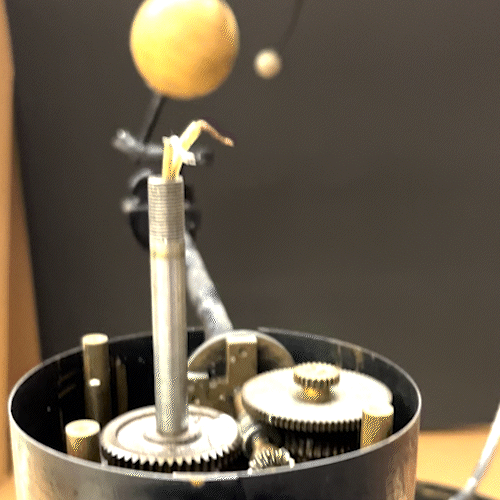
Continuing with the reassembly, we tightened up the structures on the top, that transfer the rotation horizontally down a shaft to make the Earth rotate and drive the moon in its orbit. This seems to be the most delicate part of the entire apparatus.
The lamp assembly that simulates the sun is just a regular household light fixture, so that was easy to deal with.
We decided not to disassemble the gear box that makes the earth-moon system do its magic. It appeared to be working just fine, as long as it was tightly fixed to the shaft. It just needed some cleaning and a few dabs of oil here and there. The Earth globe certainly has seen some wear and tear, but it was deemed also too delicate to try and do anything with. Best just leave it be.
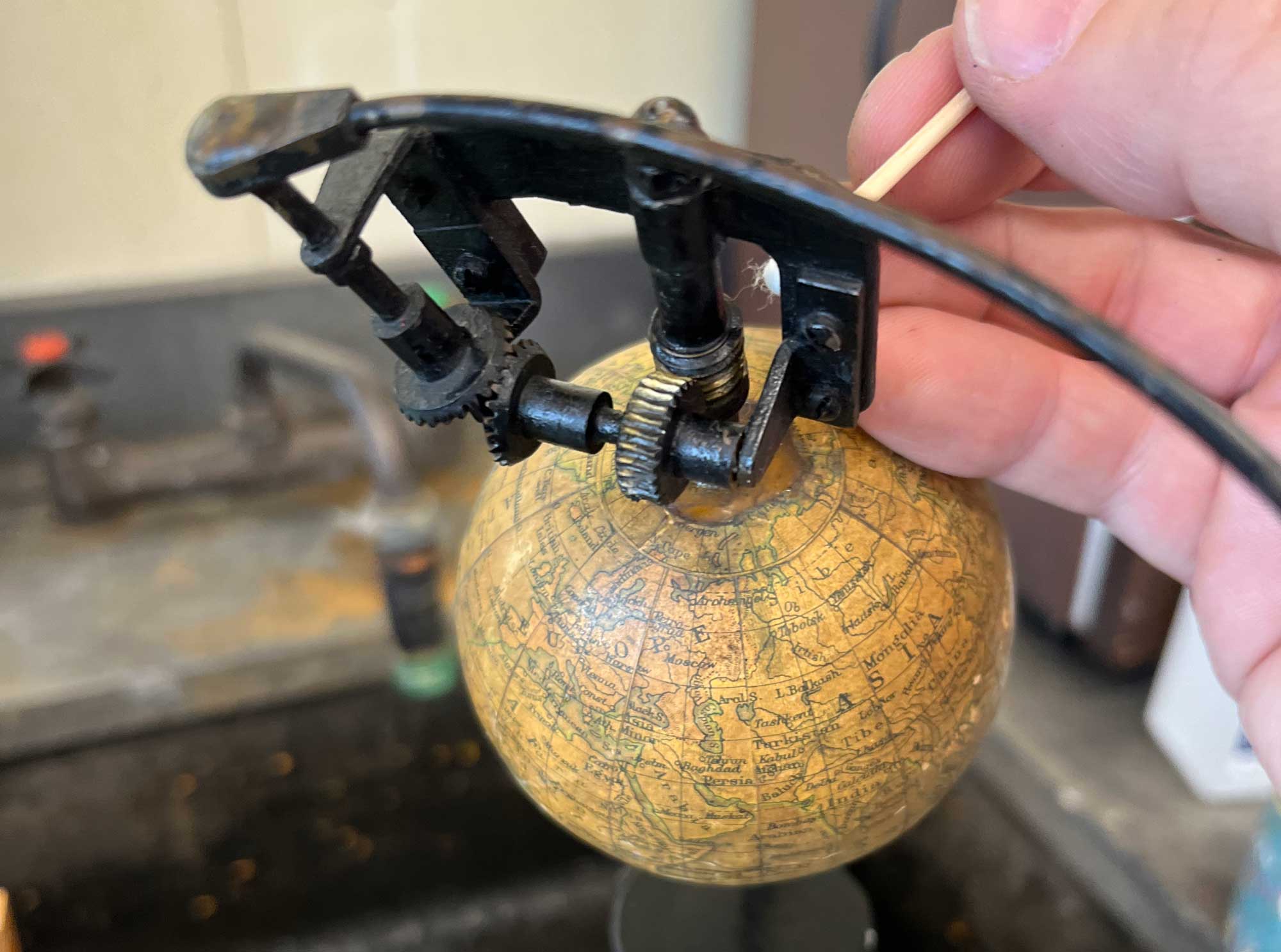
As mentioned, we had no reference items for this piece, so actually dating it was difficult. From an online auction site, we found reference to the Eastern Science Supply Company of Boston that operated in “1910 thru the mid 1940’”. But this piece had no clear date stamped anywhere. Using the globe, we can make some estimates. You can see a major port city labeled as Const. This is likely Constantinople, which of course became Istanbul in 1930, thus it’s probably the case the this globe was produced around then, certainly not much later than 1930. Perhaps it sat on a shelf for a few years before being integrated into the ESSCO orrery (it’s called a planetarium on the item itself). But, give or take, we’ll call about 100 years old.
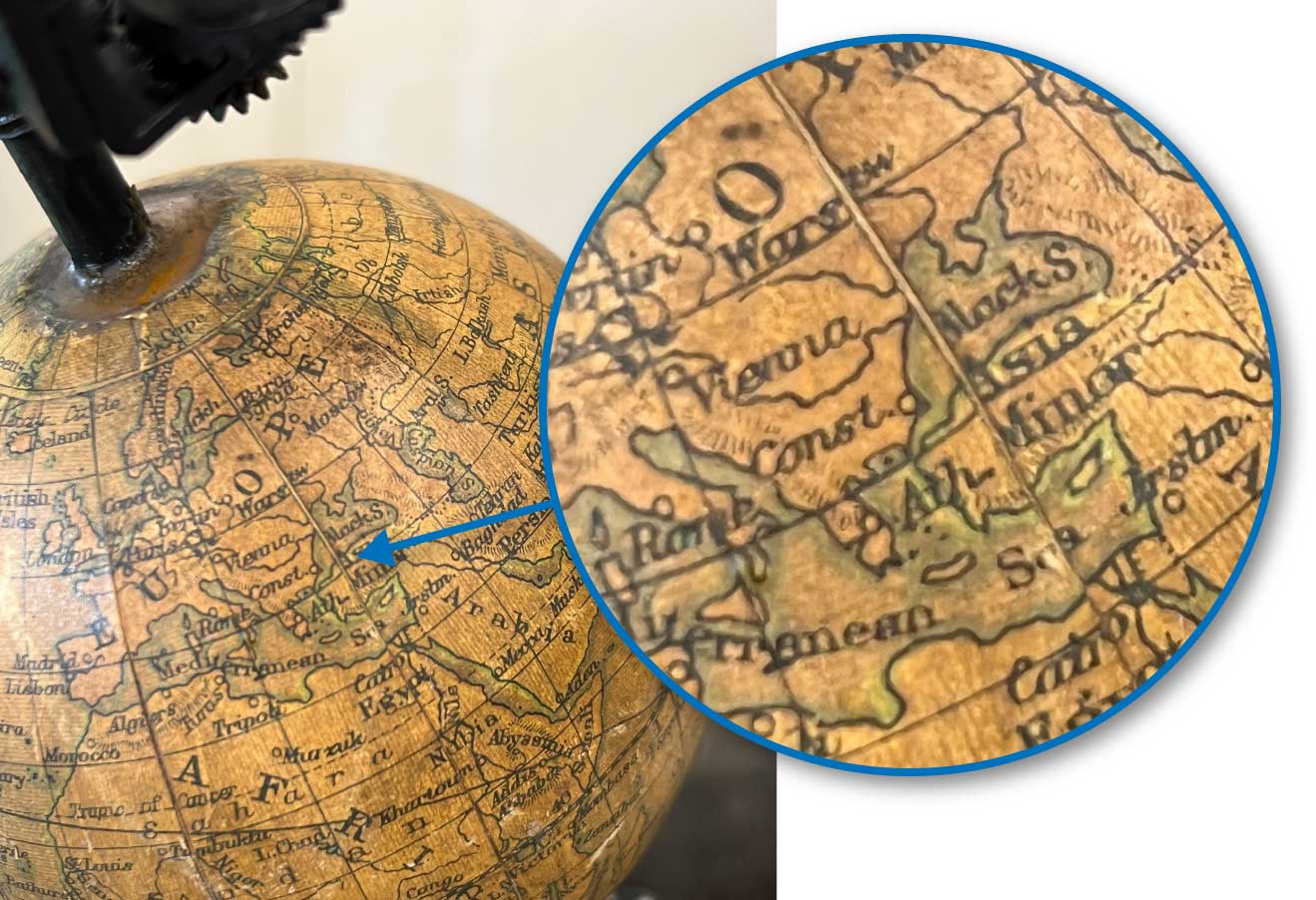
Putting it all back together
Reassembling the entire apparatus was relatively easy. We repaired some wiring, and made sure as many sticky gears where cleaned. Here we can see it in action. The Earth-Moon system is on the far side, and there are two of the inner planets (Mercury and Venus) visible in the foreground. The Sun is in the center, and if you watch the whole thing, you can see an eclipse take place.
We will be incorporating this piece in our ever growing collection of antique scientific instruments. Be sure to come a bit early next to you visit so can check out the collection.
And, if you know of any antique pieces that need a home, consider making a donation. We would love to have more!